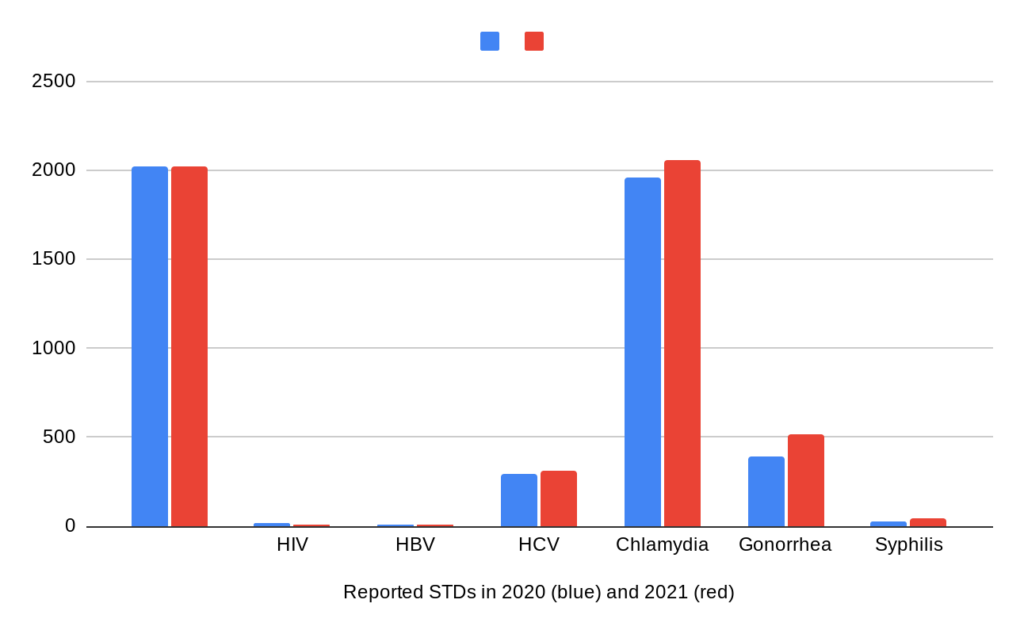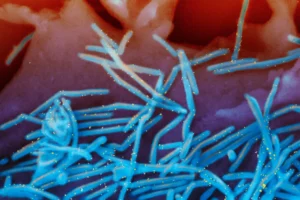Sexually Transmitted Infections in Wyoming Have Spiked, Latest Health Data Shows
Executive director at reproductive healthcare facility calls for more prevention programs
- Published In: Other News & Features
- Last Updated: Sep 10, 2022

By Shen Wu Tan
Special to the Wyoming Truth
Sexually transmitted infections have dramatically climbed in Wyoming, data shows, raising alarm among health experts.
Cases of chlamydia increased 23.6% in 2021 from 2020, according to the most recent figures released by the Wyoming Department of Health this week. Statistics also illustrate gonorrhea cases spiked 33.5%, while syphilis cases jumped by 35.5% in that same period.
“Hearing some of those numbers seems really shocking, and it is difficult when you’re sort of in the trenches of it,” said Amanda Alexander, a registered nurse and executive director at Reproductive Healthcare of the Big Horns in Sheridan. “You don’t necessarily realize the increase. You realize you’re busier and it feels like you’re treating more STIs [sexually transmitted infections] or STDs [sexually transmitted diseases], but you don’t really realize it until you hear numbers.”
The uptick in sexually transmitted diseases in Wyoming matches national and worldwide trends, Alexander noted.
In Wyoming this year, there have been 982 reported cases of chlamydia, 175 cases of gonorrhea and 35 cases of syphilis reported as of Sept. 7, the health department reported.
The most commonly diagnosed sexually transmitted infection in the Cowboy State is chlamydia. Out of the chlamydia infections from 2021, 24% were among 15 to 19 year olds, 41% in 20 to 24 year olds and 27% in 25 to 34 year olds, statewide health data illustrates.
A data analysis provided by the health department shows there were 2,062 cases of chlamydia, 519 cases of gonorrhea and 42 cases of syphilis in 2021. Meanwhile, figures from 2020 show that there were 1,957 cases of chlamydia, 391 cases of gonorrhea and 31 cases of syphilis in Wyoming that year. Cases of syphilis to date in 2022 have already exceeded those reported in 2020. On a positive note, the data also illustrates that reported HIV cases dropped 50%, from 14 in 2020 to seven in 2021.
Alexander speculated that decreased condom use, complacency and increase in long-term contraceptives such as intrauterine devices might play a role in the rise of sexually transmitted infections.
Alexia Harrist, state health officer and state epidemiologist, said in a statement, “If left untreated, these infections can cause long-term pelvic or abdominal pain, an increased risk of getting HIV, infertility, pregnancy complications, stillbirth and infant death.”
The epidemiologist noted that there was less testing for sexually transmitted diseases in 2020 and 2021 compared to earlier years, translating to possibly undiagnosed and untreated infections.
The total of 2,955 reported cases of STIs in 2021 is the second-most reported overall in five years, following 2,969 total cases reported in 2017, according to data from the state health department.
Risks for STIs include sex with multiple partners, unprotected sex, anonymous sexual contact, sexual contact while under the influence of substances and intranasal or injection drug use.
According to Harrist, STIs prevention includes routine testing, limiting the number of sexual partners, getting tested before starting a new sexual relationship, abstinence, consistent and proper condom use and asking potential sexual partners if they have been tested since their last sexual encounter.
The health department also provides STI treatment, free condoms, at-home testing options and low or no-cost testing through a partnership program with the Centers for Disease Control and Prevention called KnoWyo.
However, Alexander said that more STI prevention programs are needed and wishes Wyomingites openly talked about sex, a topic she described as culturally “taboo,” and not just about abstinence in youth education.
Wyoming schools are not required to teach sex education, and the state has no standard regarding teaching about abstinence, medically accurate sex education instruction or on consent, according to SIECUS, a sex education organization. The state health department also has a program called Wyoming Personal Responsibility Education Program that encourages youth to delay the start of sexual activity and to prevent teen pregnancy and STDs.
“I don’t think enough has been done to educate our youth, and I think that’s where it all starts,” Alexander said, noting she believes most schools across Wyoming use abstinence-based educational programs. “There’s a lot you can cover with an abstinence-based education, but it’s just better if you don’t have to sit up there and preach abstinence only cause it’s just not the reality of most teenagers’ lives.”













